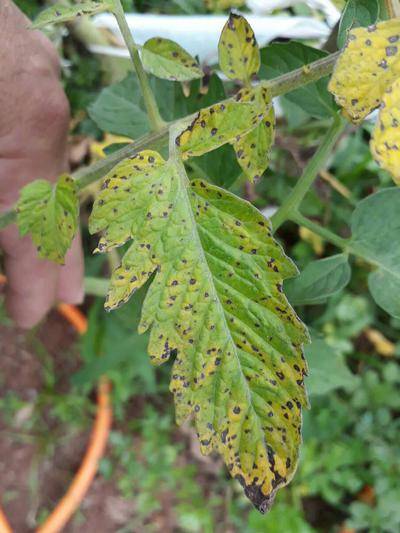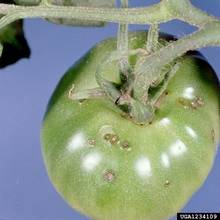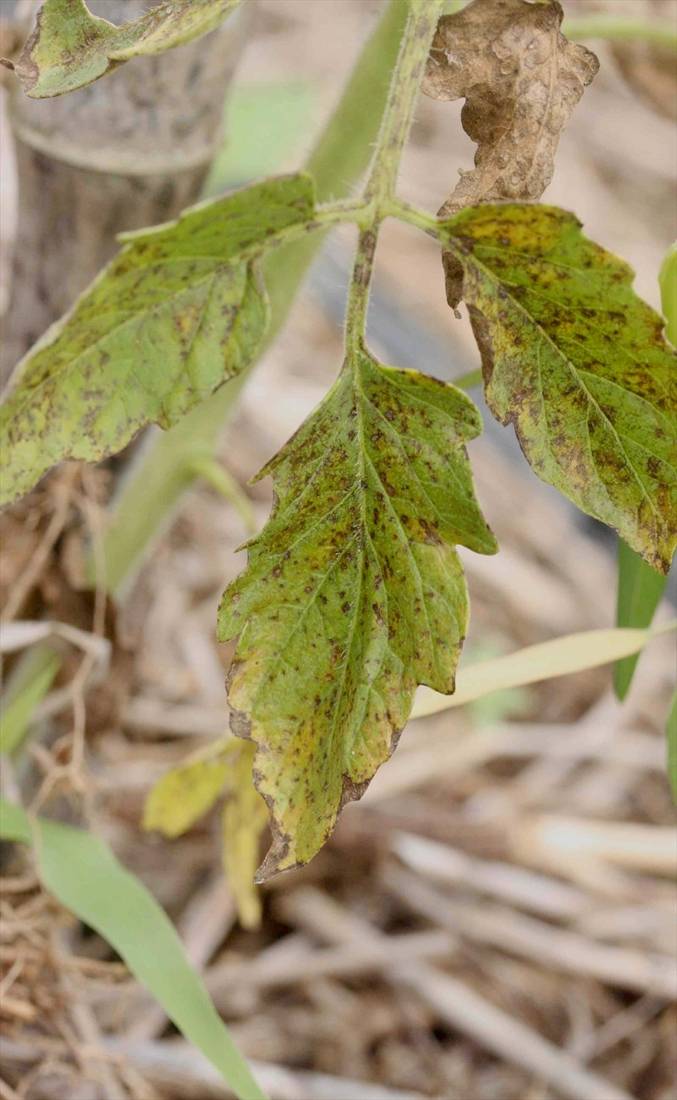Tomato
Bacterial Leaf Spot

Xanthomonas Campestris pv
Bacterial Disease

Xanthomonas Campestris pv
Bacterial Disease

Xanthomonas Campestris pv
Bacterial Disease

Xanthomonas Campestris pv
Bacterial Disease
Bacterial Spot of Tomato and Pepper (Xanthomonas campestris)
Bacterial spot, caused by Xanthomonas campestris, affects both seedlings and mature plants, causing severe leaf and fruit damage. The disease thrives in humid conditions and spreads rapidly through water splashing.
Symptoms
On Seedlings:
- Severe infections lead to defoliation (loss of leaves).
On Leaves:
- Initial water-soaked spots turn yellow/light green, then black/dark brown.
- Older spots are black, raised, and up to 7.5 mm (0.3 inch) in diameter.
- Larger blotches may form, especially on leaf margins.
- High moisture conditions: Leaves look blighted, water-soaked, greasy, and eventually die.
- Moderate moisture conditions: Small (less than 1/8 inch) round black spots with greasy, translucent centers.
- Severely affected seedlings: Leaves turn yellow and drop.
On Fruit:
- Symptoms start as dark raised spots with a water-soaked border.
- As fruit grows, spots may appear sunken, forming pits.
- Older spots (up to 1/3 inch in diameter) become black, slightly raised, and lobed.
- Superficial infection—spots do not penetrate the seed cavity.
- Aging spots: Centers disintegrate, forming craters with cracked skin edges.
Disease Development & Spread
- Bacterium persists in crop debris, volunteer plants, and weeds (e.g., nightshade, groundcherry).
- Seedborne pathogen—found inside and on seed surfaces.
- Primary spread: Contaminated seeds or transplants.
- Secondary spread: Water splashing from rain or sprinkler irrigation.
- Favored by:
- High humidity and free moisture.
- Temperatures of 20°C (68°F) and above.
- Suppressed at 16°C (61°F) or below, regardless of daytime temperatures.
- Some strains affect only tomatoes or peppers, while others infect both crops.
Key Observations
- Dry air does not stop bacterial multiplication.
- Lesions appear when bacterial populations reach ~10⁸ CFU/leaf.
- No symptoms observed at 15°C (59°F).
Conclusion
Bacterial spot is a serious threat to tomato and pepper crops, especially in humid environments. Effective management includes seed sanitation, crop debris removal, and irrigation control to reduce disease spread.
Ref: University of Connecticut, University of California








